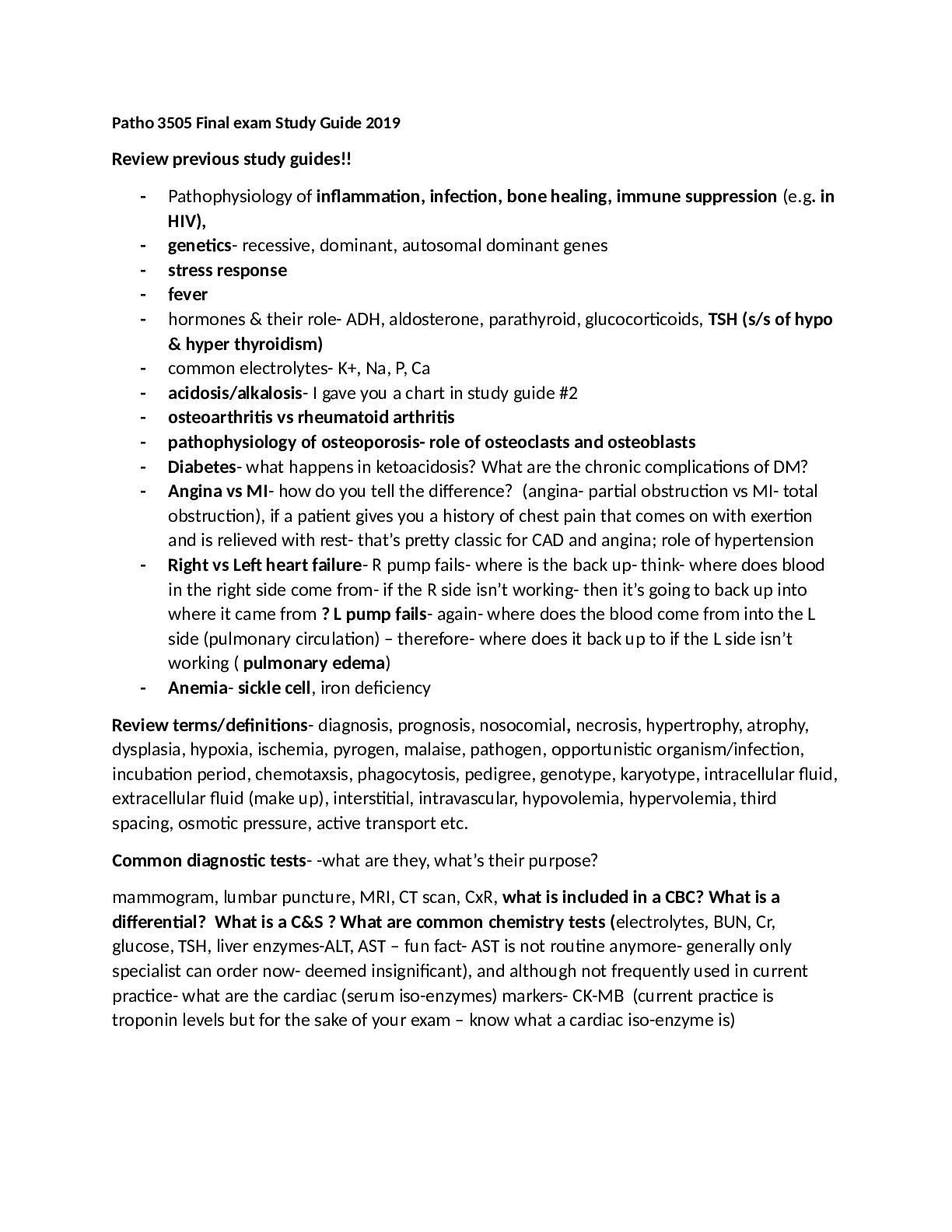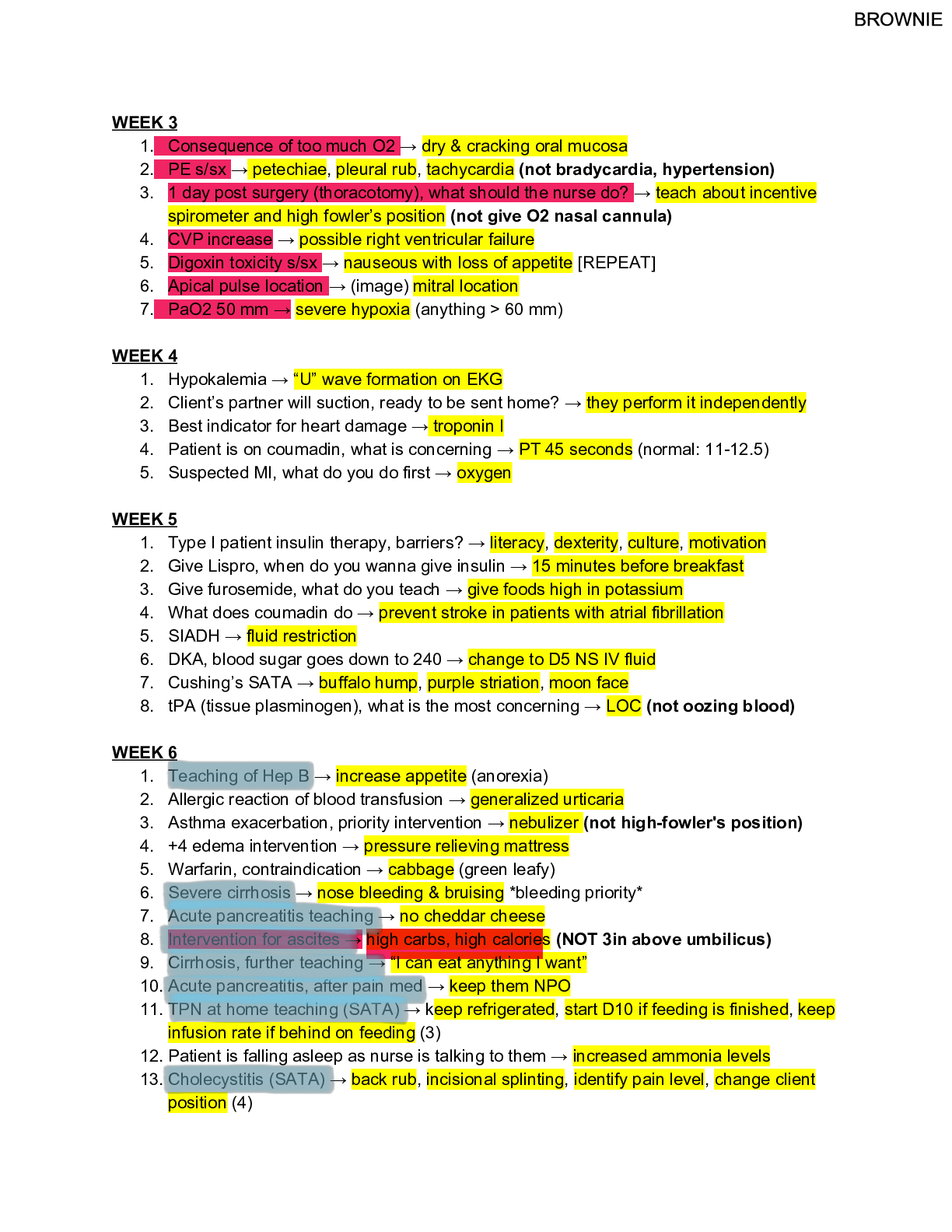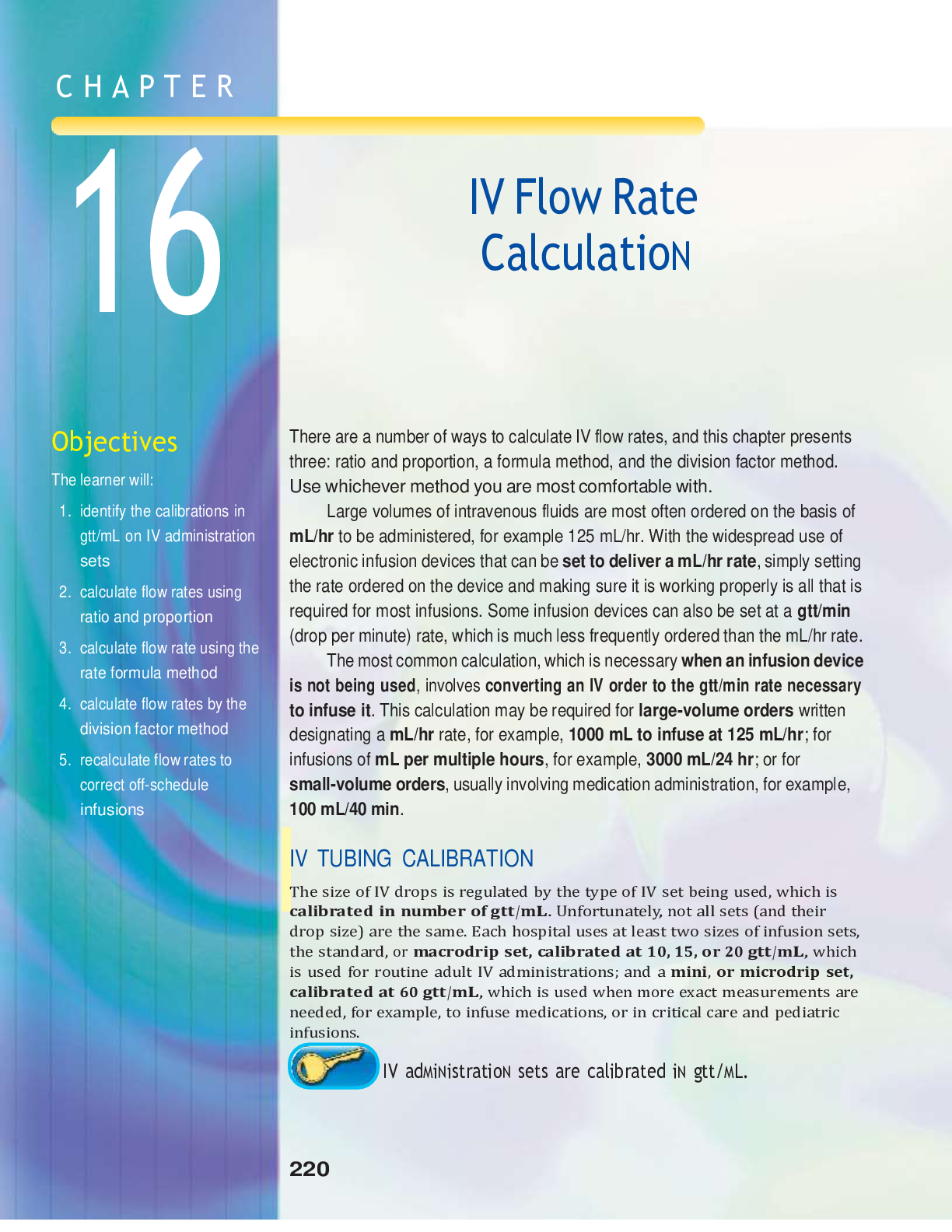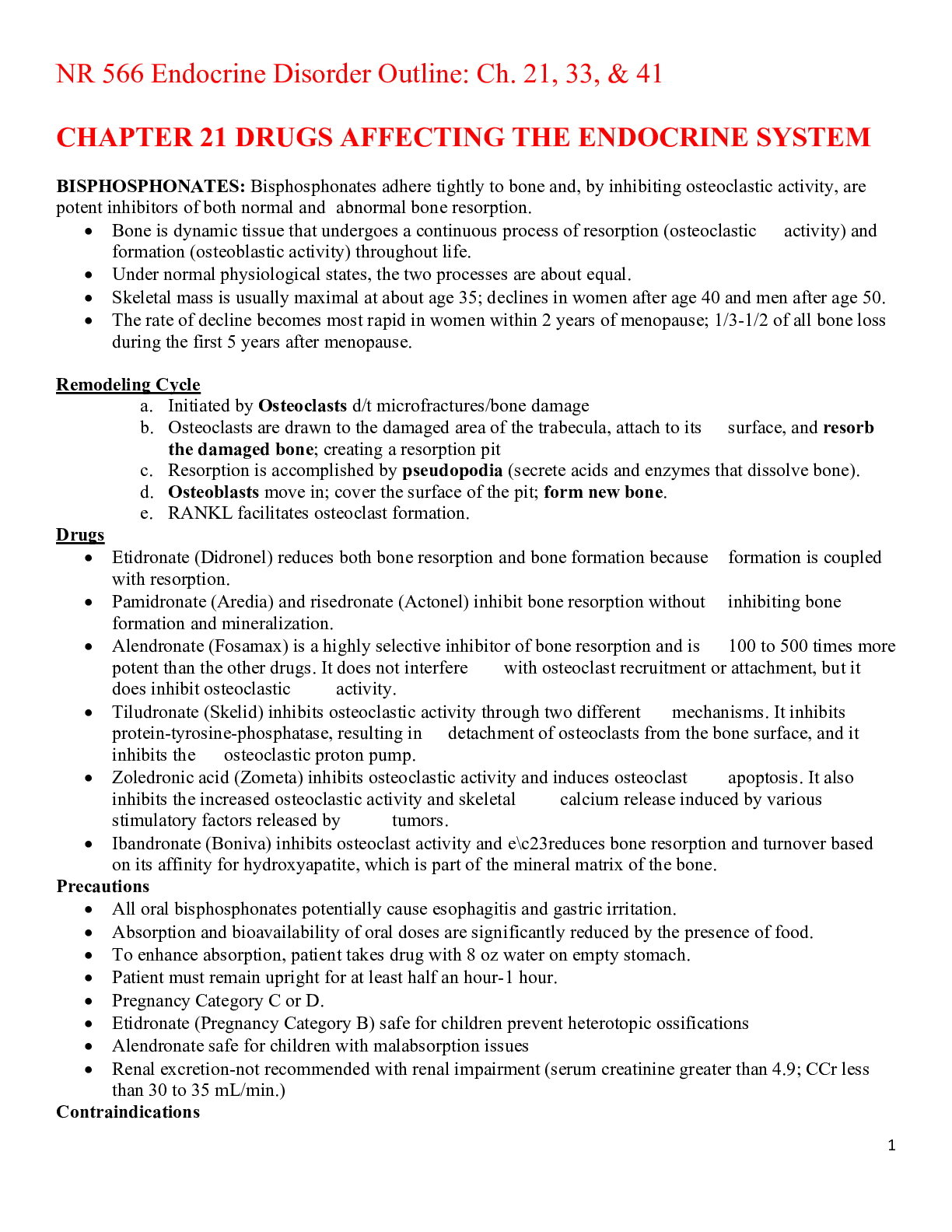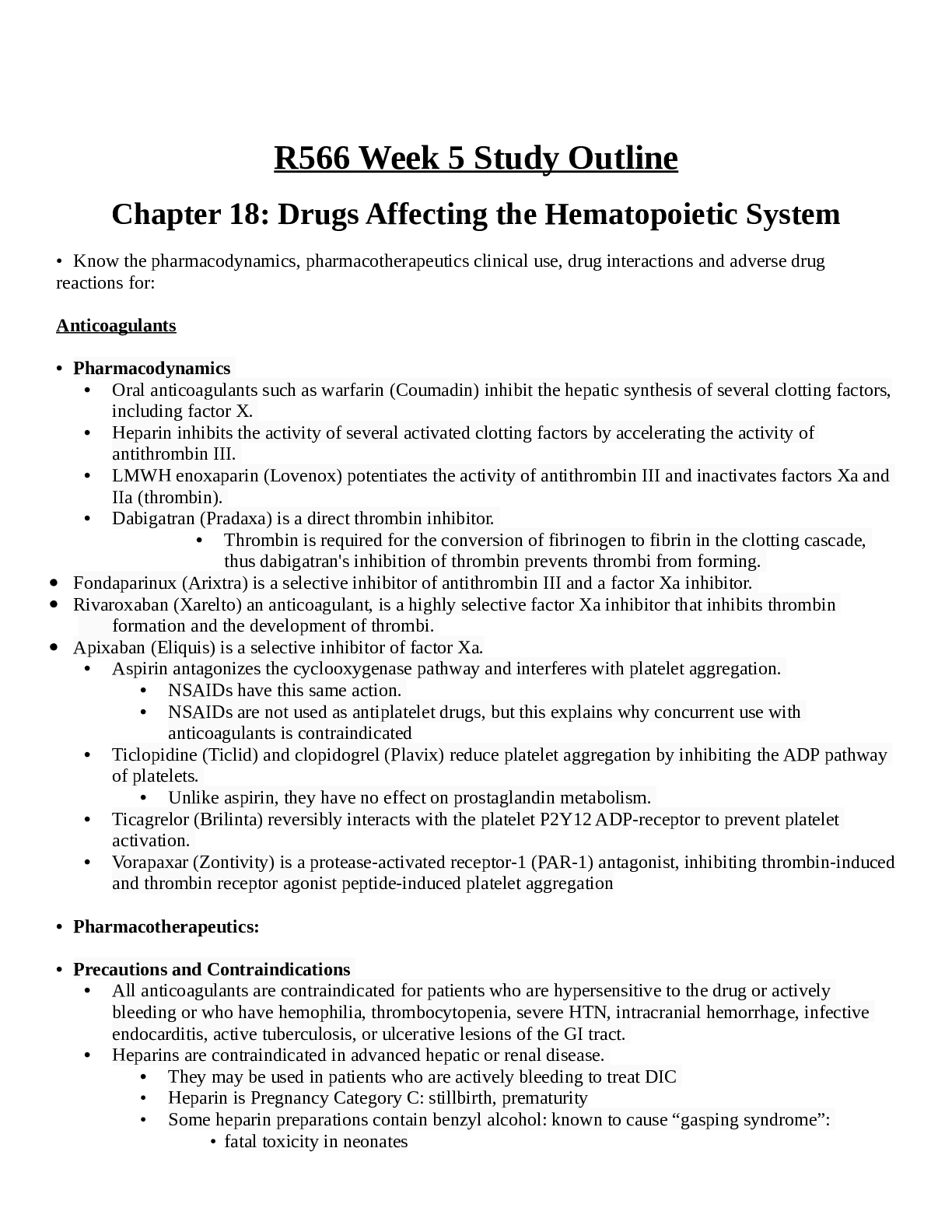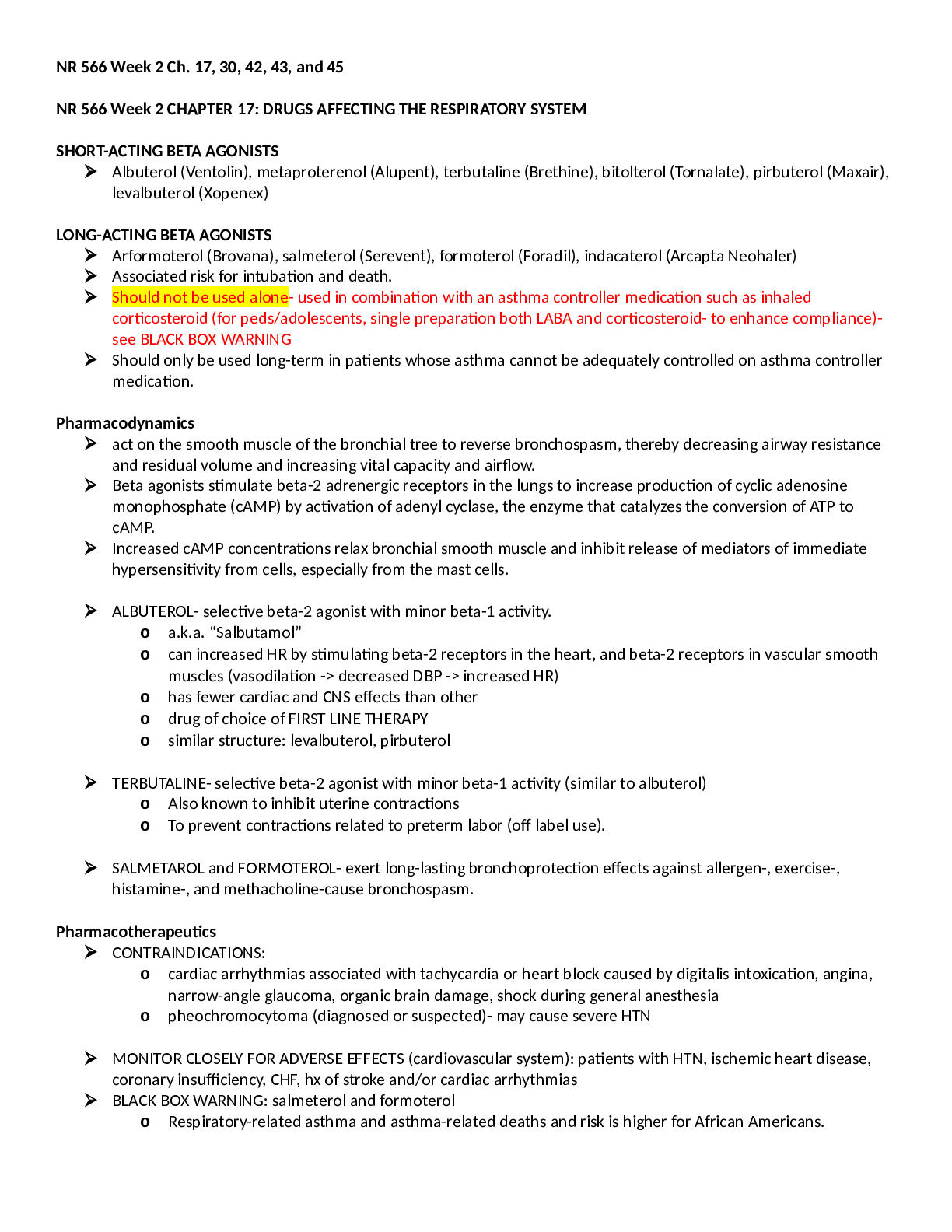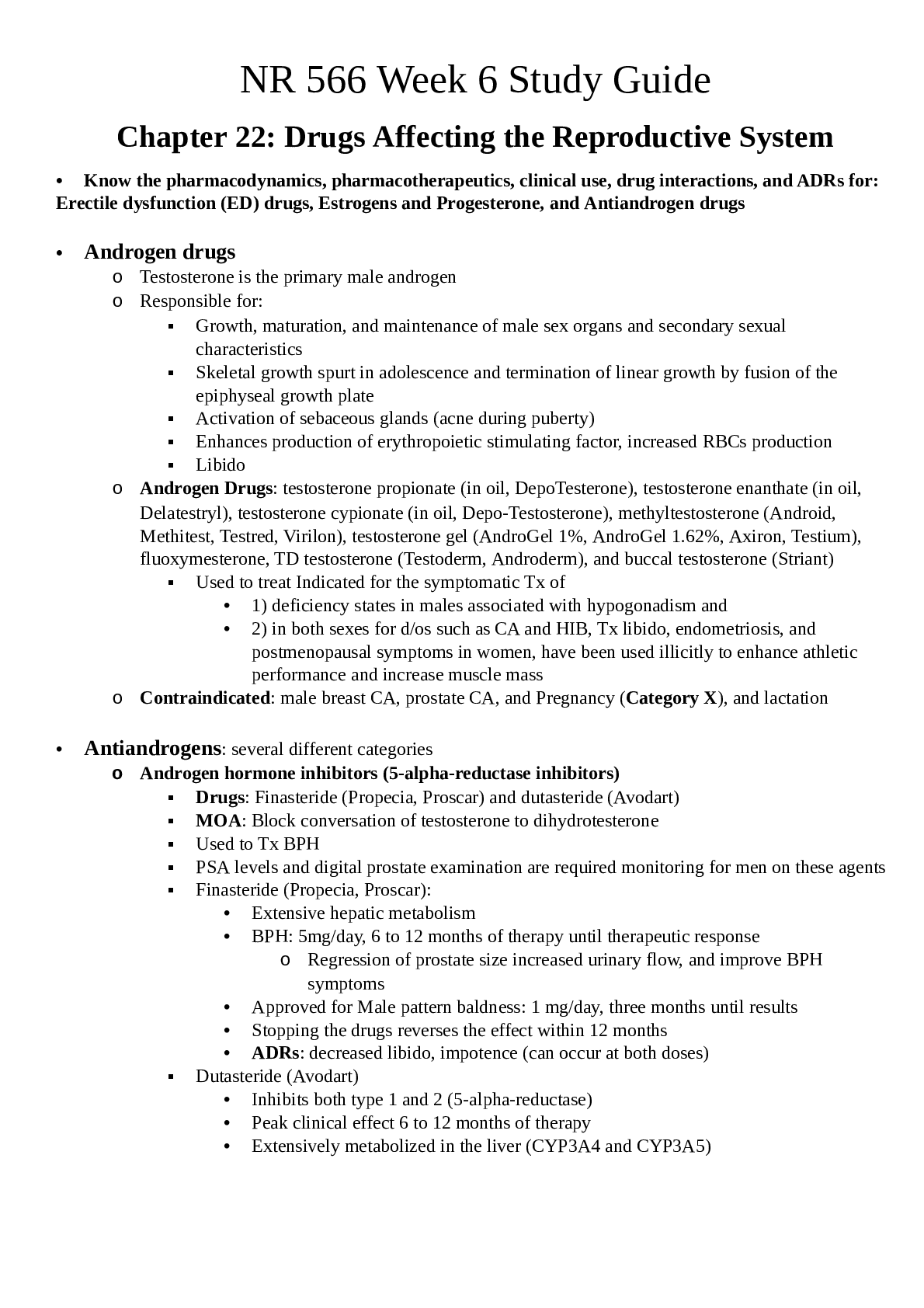*NURSING > STUDY GUIDE > NR565 Week 3 Study Outline Drugs Affecting the Autonomic Nervous System (All)
NR565 Week 3 Study Outline Drugs Affecting the Autonomic Nervous System
Document Content and Description Below
NR565 Week 3 Study Outline Many questions are written to assess your clinical application of the material from the textbook, in real-world scenarios. Chapter 14: Drugs Affecting the Autonomic Nerv... ous System Drug classes: • Adrenergic agonists ▪ are a large group of drugs that mimic the actions of norepinephrine and epinephrine, which naturally occur in our bodies. ▪ Slow heart rate and cause vasodilatation by working centrally in the brain • Alpha2 Agonists: Central o Activation of central alpha2 receptors results in inhibition of cardioacceleration & centers in the brain. Vasoconstriction o Drug names: Clonidine (Catapres), guanabenz (Wytensin), guanfacine (Tenex), and methyldopa. ▪ clonidine (HTN), • Lowers blood pressure and heart rate • Used for treatment of withdrawal symptoms • Used for attention deficit hyperactivity disorder • John has clonidine, a centrally acting adrenergic blocker, prescribed for his hypertension. He should: 1. Not miss a dose or stop taking the drug because of potential rebound hypertension ▪ phenylephrine (Colds, Allergies, Shock and Glaucoma) o Most selective to least selective o Pharmacodynamics ▪ Negative feedback control of norepinephrine release (decreases blood pressure) ▪ Hypertension: Usually used as second line or third line drugs in the treatment of mild to moderate hypertension. ▪ Elderly: Drugs in this class may be inappropriate for use in geriatric patients. ▪ Tapering the Drug: These drugs should not be stopped abruptly because the relative “lack” of alpha2 receptors impair the homeostatic balance that regulates SNS action. The prescriber should gradually taper the dose when discontinuing the medication over 4 days. o Pharmacokinetics ▪ Absorption and Distribution: Absorption following oral administration varies among the drugs in this class. Clonidine is easily absorbed from the GI tract and the skin and is lipid-soluble, allowing it to rapidly enter the brain form the circulation. Guanabenz and guanfacine are also well absorbed. All of the drugs are widely distributed in body tissues. Both clonidine and methyldopa cross the placenta and are found in breast milk. Methyldopa is not completely absorbed in the gut and is absorbed via an aromatic amino acid transport system. ▪ Metabolism and Excretion: The liver, in varying degrees, metabolizes each of these drugs. The kidney is the organ of excretion for each of these drugs. Patients with renal failure will experience increased adverse effects as methyldopa and its metabolites accumulate, resulting in prolonged hypotensive action. ▪ Guanfacine: Has a significant first-pass effect. The drug is metabolized by CYP3A4 with about 50% of the oral dose metabolized to inactive sulfate metabolites and 50% eliminated unchanged in the urine. ▪ Methyldopa: Extensively metabolized by the liver to inactive metabolites, with about 20% of the active drug appearing in the plasma. ▪ Clonidine: About 50% of clonidine dose is hepatically metabolized to inactive metabolites, and the remaining 50% is excreted unchanged in the urine. o Pharmacotherapeutics ▪ Cautious use is recommended in the presence of severe coronary insufficiency, recent MI, and renal function impairment. Because they cross the blood brain barrier, methyldopa and clonidine are used cautiously in the presence of cerebrovascular disease. ▪ Clonidine: Should be used with caution with patients who are at risk for mental depression, and it should be discontinued if depression occurs. Should be avoided in patients at risk for bradycardia. Because they affect cognitive function, centrally acting alpha2 agonists should be avoided or used with extreme caution in population such as older adults whom this adverse response creates significant problem. Preganancy Category C. Crosses the placenta and no well-controlled studies have been done in pregnant women. ▪ Guanabenz: Pregnancy Category C. No adequate human studies have been done on guanabenz, and skeletal anomalies were found in the offspring of mice that were given the drug. ▪ Methyldopa: Pregnancy Category B in oral form. Pregnancy Category C in injectable form. Appears in breast milk. o ADRs ▪ drowsiness, bradycardia, AV block, palpitations ................................................................CONTINUED.......................................................................... [Show More]
Last updated: 1 year ago
Preview 1 out of 23 pages
Instant download
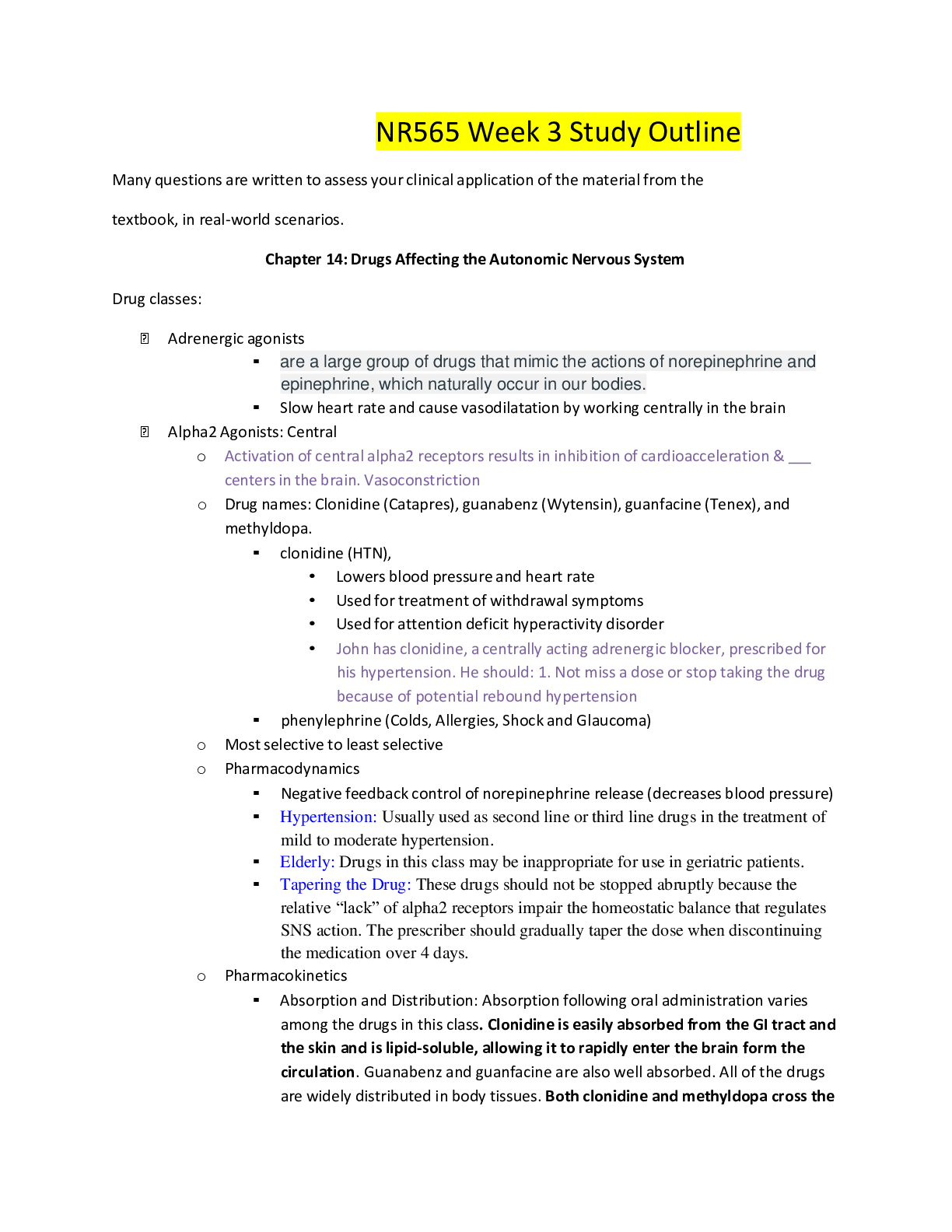
Buy this document to get the full access instantly
Instant Download Access after purchase
Add to cartInstant download
Reviews( 0 )
Document information
Connected school, study & course
About the document
Uploaded On
Apr 25, 2021
Number of pages
23
Written in
Additional information
This document has been written for:
Uploaded
Apr 25, 2021
Downloads
0
Views
31


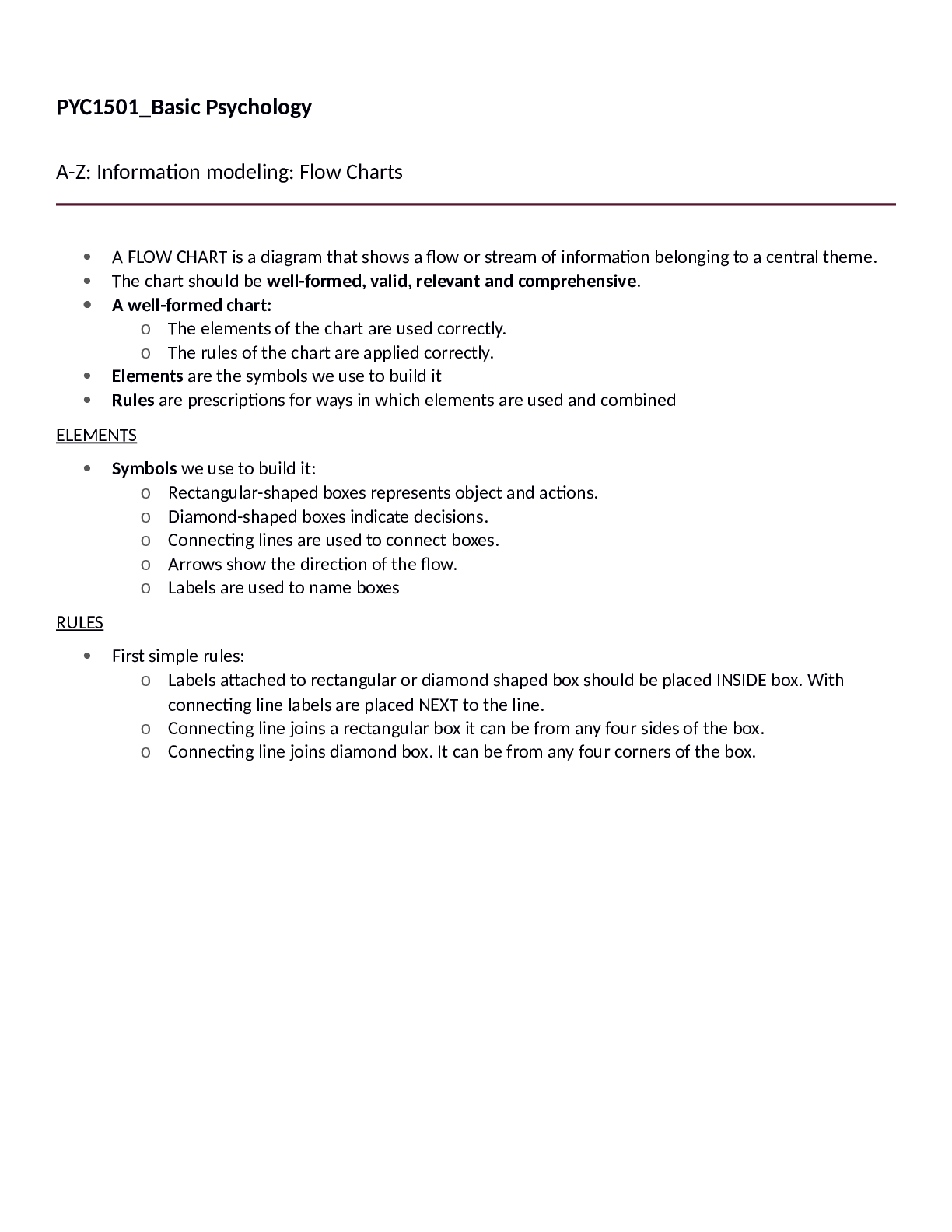
.png)


